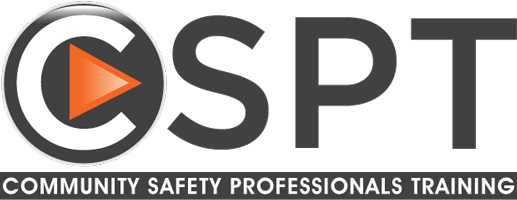Overview
The course enables ASB & community safety practitioners to develop their skills and become competent specialists. It has a broad choice of key modules focussing on the tools and powers available to tackle ASB & community safety issues. To qualify delegates are required to complete four modules including the mandatory Tools and Powers module, and complete a post-course assignment
Book onto this course at the bottom of this page
Who should attend?
This course is a must for practitioners who specialise in ASB or community safety including police officers, ASB & Community Safety officers. It will empower practitioners to resolve cases more effectively by using the full range of tools and techniques.
The aim of the qualification is to make learners proficient in:
- Resolving community safety & antisocial behavioural issues
- Supporting victims and witnesses
- Conducting interviews and completing statements
- Exchanging information
- Identifying and referring cases of domestic violence
- Resolving conflict
- Investigating reported cases of antisocial behaviour
Course total learning hours
Minimum 40 hours to a maximum 70 hours delivered online - each module is x2 three hour session.
- 1 hour of self-study (pre-read) per course
- 6 hours of tuition (per module) 24 hours per course
- Post-course assignment.
Delegates may choose 4 modules to complete from the list below:
-
-
|
|
Wednesday
|
Wednesday
|
|
ASB Tools & Powers
|
17th April
|
24th April
|
|
Community Safety Casework
|
1st May
|
8th May
|
|
Interviewing & Statement Taking
|
15th May
|
22nd May
|
|
Conflict Resolution
|
29th May
|
5th June
|
|
Domestic Abuse Awareness
|
12th June
|
19th June
|
|
Information Exchange
|
26th June
|
3rd July
|
|
Supporting victims & Witnesses
|
10th July
|
17th July
|
- All the sessions are 9am -12.30pm
Course 1: Antisocial Behaviour Problem Resolution, Tools and Powers (core)
Course 1: Antisocial Behaviour Problem Resolution, Tools and Powers (core)
This is the mandatory unit to achieve the overall qualification and must be completed along with at least 3 of the remaining 6 courses. Each one, however, can be viewed as a standalone course with a programme and as such, each one attracts a BTEC Level 3 Certificate of Performance. The ability to successfully resolve Community Safety issues involving Antisocial Behaviour (ASB) requires a knowledge of the range of resolution techniques available to senior practitioners. This unit will provide learners with knowledge of how to resolve ASB by using a “step by step” process starting with informal non-legislative techniques and progressing through these options to more serious legal judicial solutions depending on success at each stage. There is an accepted progressive route and entry at various stages depending upon seriousness to resolve ASB, which will be taught.
On this course, the learner will need to demonstrate that they can meet all the following outcomes of learning:
- Understanding of informal problem resolution techniques pertaining to antisocial behaviour
- Evaluate a case of minor antisocial behaviour and suggest an appropriate initial informal resolution
- Identifying when a minor problem involving antisocial behaviour is not being resolved by an initial resolution and suggest a viable no-legislative alternative
- Understanding formal problem resolution techniques pertaining to antisocial behaviour
- Evaluate an ongoing case of antisocial behaviour and suggest an appropriate legislative resolution
- Access effective options when dealing with intractable cases of antisocial behaviour and when antisocial behaviour can be referred
Course content (Learning Objectives)
1 - Understanding informal problem resolution techniques pertaining to antisocial behaviour
Informal actions:
- The range of informal options available to resolve cases of antisocial behaviour
- Implementing options in an ordered manner
- Escalation procedures
2 - Understanding formal problem resolution techniques pertaining to antisocial behaviour
Legislative actions:
- Formal and legislative options available to deal with cases of antisocial behaviour
- Requirements to apply for legislative antisocial behaviour powers
- Options in relation to obtaining assistance
- Requirements when dealing with breaches of injunctions and orders
Course 2: Victim and Witness Support
Course 2: Victim and Witness Support
Supporting victims and witnesses of crime or antisocial behaviour is an essential skill in order to procure their evidence in proceedings, promote community confidence and avoid unnecessary anxiety. This unit will provide learners with knowledge of how to understand, deal with and support victims and witnesses of crime and or antisocial behaviour so that they feel confident to assist, guide, reassure and empower those victims and witnesses to participate in the resolution process.
On this course, the learner will need to demonstrate that they can meet all the following outcomes of learning:
- Understand the risk to and vulnerability of victims and witnesses
- Identify antisocial behaviour (ASB) and crime incidents where actions could be taken to support victims and witnesses
- Assess the difference between “targeted” and “non-targeted” crimes and/or act acts of ASB
- Identify highly vulnerable victims of ASB or Crime
- Understand what problem-solving resolutions can be adapted to support victims and witnesses
- Analyse the capabilities of partner agencies who can assist the victims and or witnesses in a given scenario
- Justify referral to a particular partner based on their capability to assist
Course Content (Learning Objectives)
1 - Understand risk to and vulnerability of victims and witnesses
Risk Factors:
- Case studies involving vulnerable victims and witnesses
- Repeat victimisation
- Perpetrator targeting of victims
- Risk and harm assessment tool
2 Understand what problem resolutions can be adopted to support victims and witnesses
Partnership working:
- Partners that are available to assist in crime or ASB cases
- What differing partners have to offer
- How to engage with partners
- How to manage a case involving partnership working
Course 3: Interviewing and Statement Taking
Course 3: Interviewing and Statement Taking
The ability to effectively interview victims and witnesses and also to take a statement which is capable of being submitted in judicial proceedings is essential in resolving most crime and Antisocial Behaviour (ASB) cases. This unit will provide learners with knowledge of how to interview victims and witnesses and how to produce a statement which can be used in legal proceedings. The unit will equip learners with differing interview techniques which will be useful for undertaking investigation. Also included in this unit will be the rules in relation to evidence and statements for ASB and crime cases.
On this course, the learner will need to demonstrate that they can meet all the following outcomes of learning:
- Understand how to conduct an interview in relation to a case of antisocial behaviour
- Explain how to prepare an interview for witnesses and victims of antisocial behaviour
- Explain how to interview a witness of antisocial behaviour using the appropriate technique(s)
- Be able to compile a statement capable of being used in court
- Compile a witness statement from interview notes which contain relevant evidence about a case of antisocial behaviour
- Compile a witness statement from interview notes which complies with the statement rules civil court proceedings
Course content (Learning Objectives)
1 - Understanding how to conduct an interview in relation to a case of antisocial behaviour
Interviews:
- Interview preparation
- Interview techniques
- Recording interviews, best practice
2 - Be able to compile a statement capable of being used in court
Statements:
- Evidence
- Civil procedure rules
- Statement writing
Course 4: Information Exchange
Course 4: Information Exchange Introduction
The ability to exchange information in crime and disorder cases is an essential tool available to senior practitioners. This unit will provide learners with knowledge of how to exchange information lawfully by teaching the legislative enablers to information exchange in such cases. Learners will also be taught how information exchange protocols work and their place within the information exchange capability.
On this course, the learner will need to demonstrate that they can meet all the following outcomes of learning:
- Understand information exchange legislation
- Compare legislative enable available for use when dealing with crime and disorder in a given scenario
- Discuss why problems arise when exchanging information in crime and disorder cases
- Understand information exchange protocols
- Explain how an information exchange protocol works
- Explain how to facilitate the exchange of information in a crime and disorder case using an information exchange protocol
Course content (Learning objectives)
1 - Understand information exchange legislation
Information Exchange Legislation
- The legislation giving the ability to exchange information
- The legislation requiring information to be exchanged
- Barriers to information exchange
- Common law
2 - Understand information exchange protocols
Information Exchange Protocols
- The emergence of information exchange protocols
- What information exchange protocols sought to achieve
- What information exchange protocols should include
- Problems with information exchange protocols
Course 5: Domestic Violence Awareness
Course 5: Domestic Violence Awareness Introduction
The ability to identify Domestic Violence when dealing with Antisocial Behaviour (ASB) is a valuable skill for senior practitioners. There may be occasions when community safety practitioners might encounter incidents of antisocial behaviour (such as noisy neighbours) which could in fact be domestic abuse. This unit enables learners to identify potential cases of domestic violence, and the correct options that should be immediately employed to protect individuals from domestic abuse and also what to do when potential domestic violence has been encountered.
On this course, the learner will need to demonstrate that they can meet all the following outcomes of learning:
- Understand how to recognise domestic violence
- Explain what constitutes domestic violence
- Discuss what to look for with the “tell-tale” signs of domestic abuse
- Understand the options available to protect individuals from domestic abuse
- Evaluate the role of partnership agencies that are engaged in addressing domestic violence
- Explain domestic violence case conferencing arrangements
Course content (Learning objectives)
1 - Understand how to recognise domestic violence
Domestic violence signs and symptoms
- Domestic violence recognition
- The definition of domestic violence
- Markers indicating domestic violence
- Definitions and terminology
- Risk factors to domestic violence
- Why domestic violence happens
- Child protection
2 - Understand the options available to protect individuals from domestic abuse
What to do when domestic violence is believed to be occurring
- Partners able to assist with suspected domestic violence
- Partners statutory duties in relation to domestic violence
- Cases conferencing and referral routes
Course 6: Conflict Resolution
Course 6: Conflict Resolution Introduction
The ability to successfully resolve conflict when dealing with crime and disorder issues is an invaluable tool to the experienced, professional community safety practitioner. Not only could this resolve the problem being complained of, it is also valuable in maintaining the safety of all persons concerned including victims, witnesses, perpetrators and the community safety staff dealing with the complaint. This unit will provide learners with knowledge of the causes, indicators of conflict resolution. There is an accepted progressive route, and entry at various stages depending upon seriousness, to resolve ASB which will be taught.
On this course, the learner will need to demonstrate that they can meet all the following outcomes of learning:
- Understand conflict in the crime and disorder environment
- Assess the main causes of conflict related to community safety
- Discuss the various stages of a conflict
- Evaluate the costs of conflict in a community safety environment
- Be able to respond to conflict in a crime and disorder environment
- Assess the most appropriate response to the emerging conflict situation described in the scenario
- Evaluate a risk assessment using an organisations workplace violence policy
Course content (Learning objectives)
1 - Understand conflict in the crime and disorder environment
Conflict identification and consequences:
- Reasons conflicts arise
- Stages of conflict
- Signs and markers in human behavioural traits indicating potential violence is imminent
- Costs of unresolved conflict
2 - Be able to respond to conflict in a crime and disorder environment
Conflict resolutions:
- Methods to prevent and resolve conflict
- Actions and strategies likely to be effective to defuse and resolve conflict
- Risk assessment
- Natural responses to conflict
- Styles of conflict management
- Listening, questioning and body language
- Modules of influencing behaviour and attitude
Course 7: Community Safety Casework
Course 7: Community Safety Casework
The ability to successfully investigate reported cases of crime and disorder especially at the more serious end of the scale, requires a knowledge of general and specialist investigation techniques. The unit will provide learners with the fundamental knowledge of investigative methodology and give specific guidance on how to investigate crime and disorder related cases. The unit will also guide leaners on how to employ specialised investigation tools covered by legislation and give guidance on the dangers involved when undertaking surveillance or using informants. This knowledge will be taught in the context of a general investigation strategy and emphasise when it would be unlawful to employ such techniques and how to obtain the appropriate authority.
On this course, the learner will need to demonstrate that they can meet all the following outcomes of learning:
- Be able to undertake a crime and disorder investigation
- Evaluate a community safety related investigation using a recognised methodology
- Discuss how to collect useful evidence for community safety investigation
- Understand investigation techniques controlled by legislation
- Discuss the requirements for obtaining authority to undertake surveillance
- Discuss the requirements for obtaining authority to use an informant.
Course content (Learning objectives)
1 - Be able to undertake a crime and disorder investigation
Case management:
- Investigative hypnotises
- Investigative steps
- Records
- Concluding investigations
Legal requirements:
- Evidence definitions
- Potential evidential sources
- Hearsay evidence
- Professional witnesses
2 - Understand investigation techniques controlled by legislation
Surveillance:
- Requirements of the legislation
- Directed surveillance
- Intrusive surveillance
- Records and documentation
- Prohibitions and restrictions
Informants:
- Requirements of the legislation
- Witnesses and status creep
- Intrusive surveillance
- Juvenile informants
- Records and documentation
Online Booking



